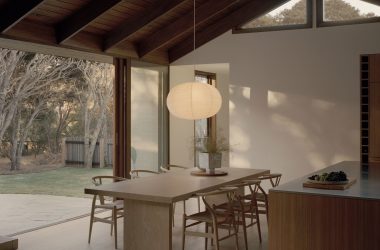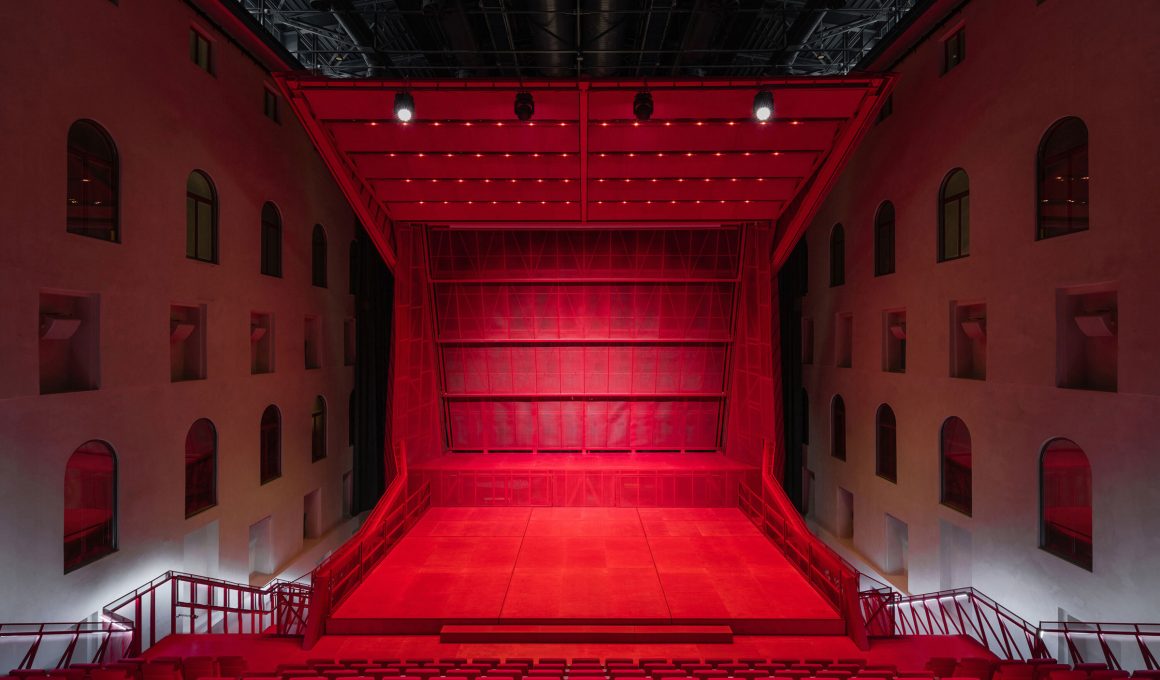The Imperial Spa, a stunning example of spa innovation since its inception in 1895, has undergone a remarkable transformation, emerging as a lively cultural center. At the heart of this revitalization lies a modern “music machine,” a multifunctional hall that draws inspiration from the building’s historic “peat machine.” This bold design, crafted by Petr Hájek Architekti, strikes a harmonious balance between honoring the past and embracing the future, showcasing a deep respect for the original architecture.
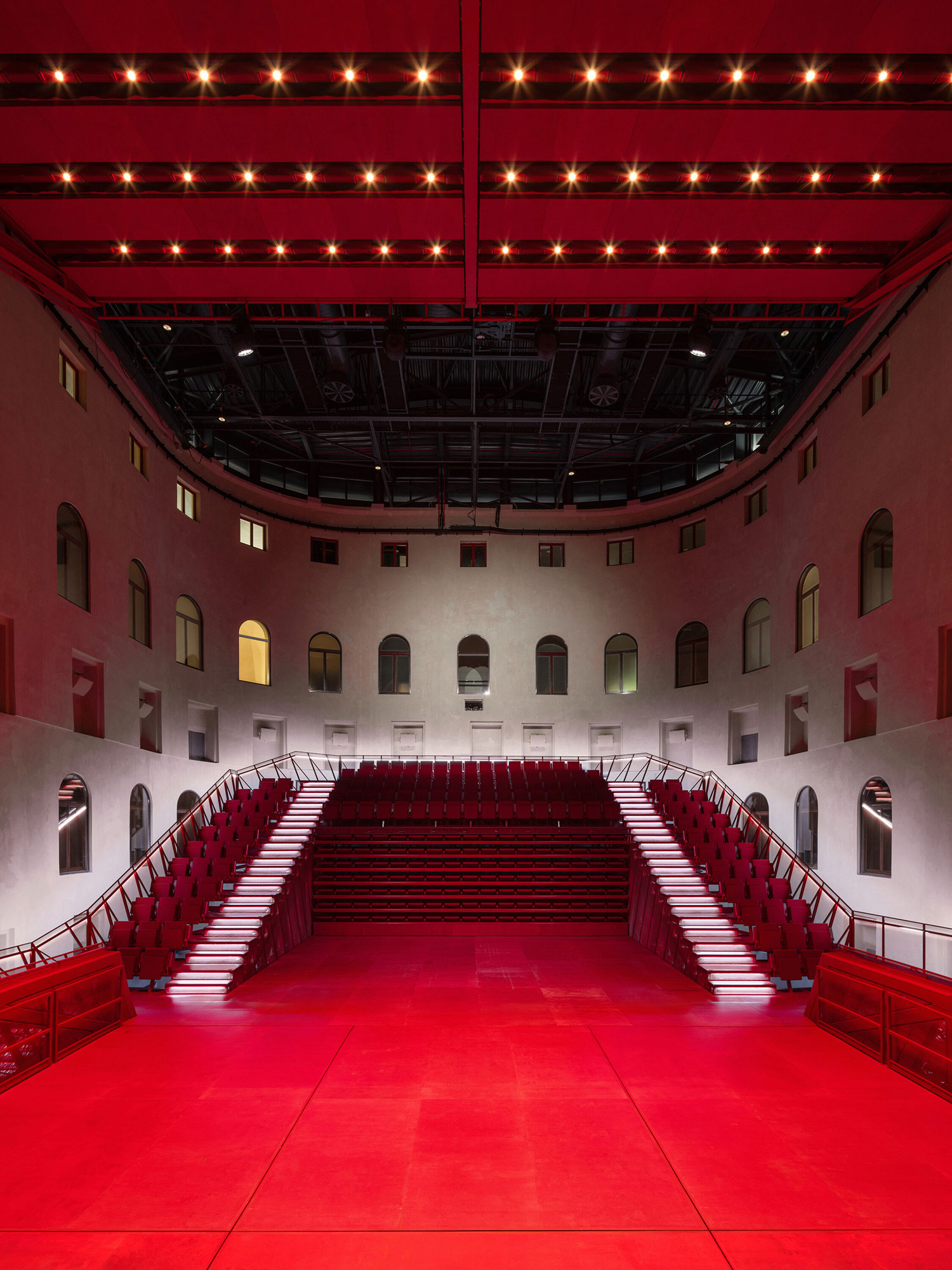
The new hall is a marvel of acoustic and spatial versatility, featuring rotating panels, retractable sound reflectors, and resonant wooden surfaces that allow it to adapt seamlessly to a wide range of events, from intimate concerts to large conferences. Its interior, drenched in a rich red hue reminiscent of classic theater curtains, radiates warmth and drama, inviting creativity and connection within its walls. This innovative space not only enhances the Imperial Spa’s legacy but also ensures its ongoing relevance in the cultural landscape.
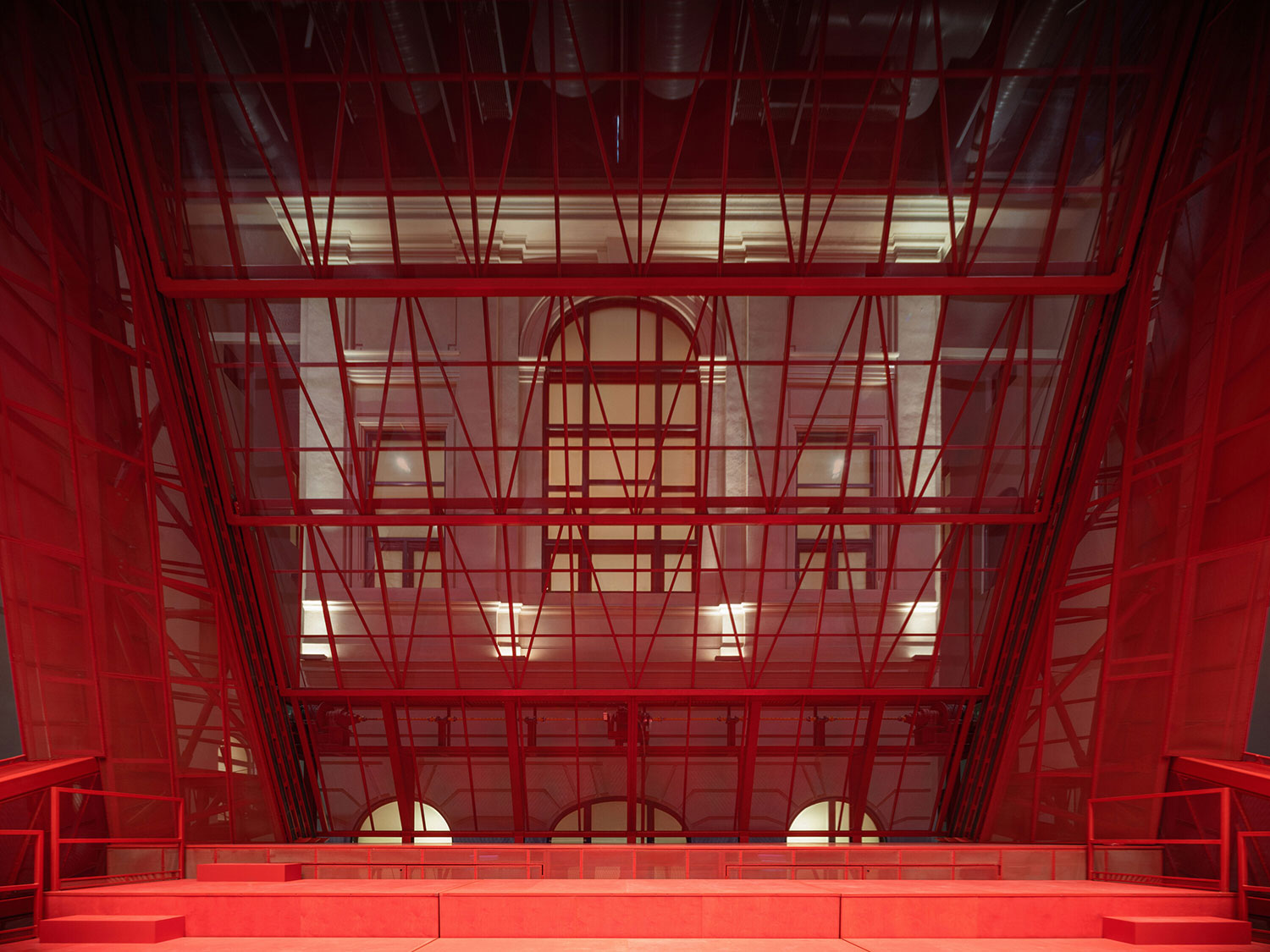
The historic Imperial Spa, completed in 1895, was a beacon of architectural and technological advancement during its time. The latter half of the 19th century was marked by groundbreaking inventions, including Thomas Edison’s light bulb, Nikola Tesla’s induction motor, and Alexander Bell’s telephone. This era also saw the introduction of the first internal combustion engine car by Carl Benz and Gottlieb Daimler, as well as Henri Giffard’s steerable airship. Meanwhile, cultural icons like Jules Verne and Claude Monet were shaping the artistic landscape, with Verne penning “From the Earth to the Moon” and Monet creating the iconic “Impression, Sunrise.”
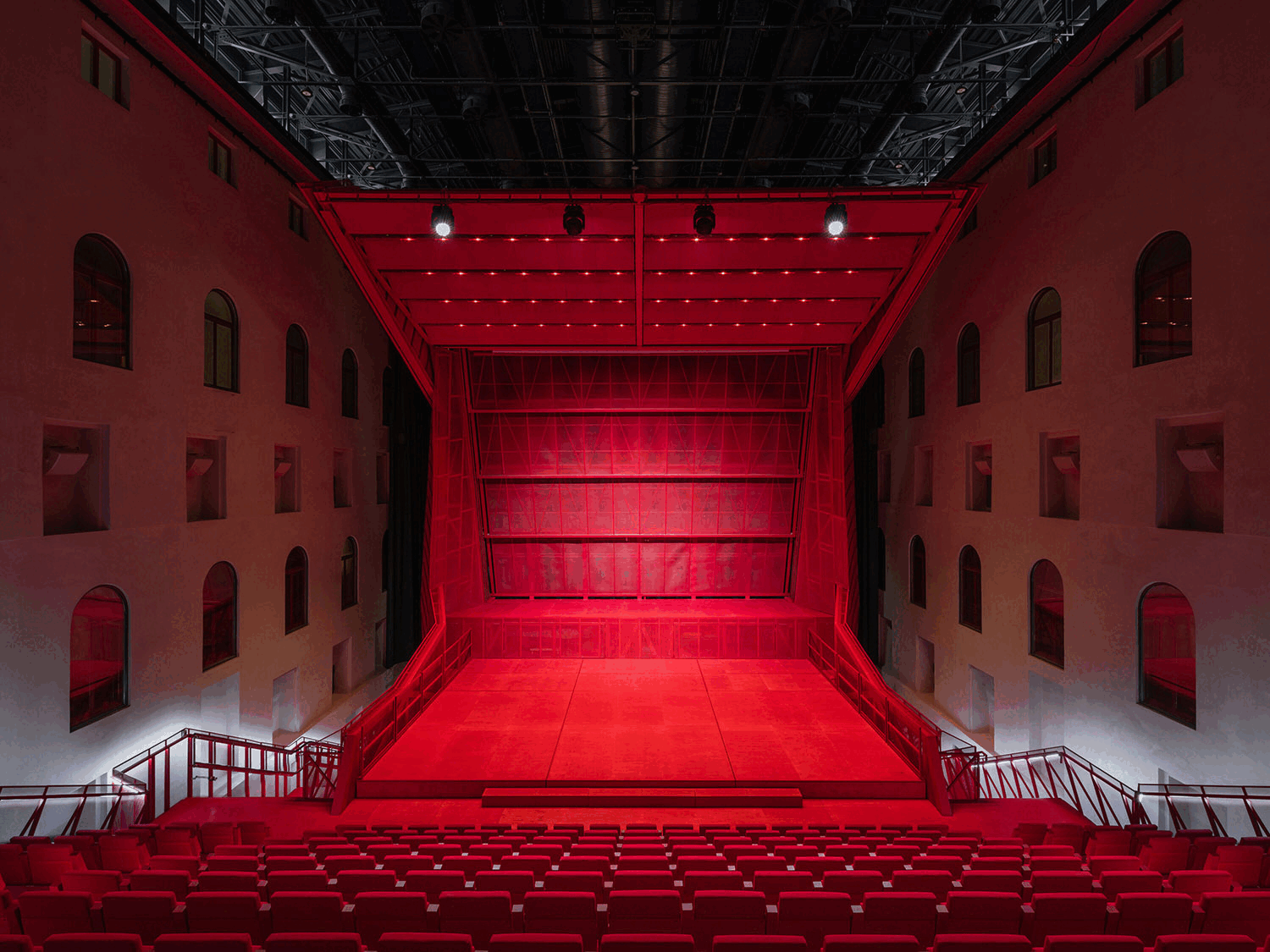
Technological advancements and the capability to create intricate mechanical devices from steel were evident in the design of the Imperial Spa. Architects Ferdinand Fellner and Hermann Helmer integrated a distinctive mechanism for the processing and distribution of peat. This innovative system utilized conveyors and elevators to transport peat from a processing facility to the multi-story bathing areas. As a result, the spa could accommodate up to 2,000 guests daily, providing access to 100 baths and ensuring a swift return on investment, even though the initial budget had been exceeded by twofold.
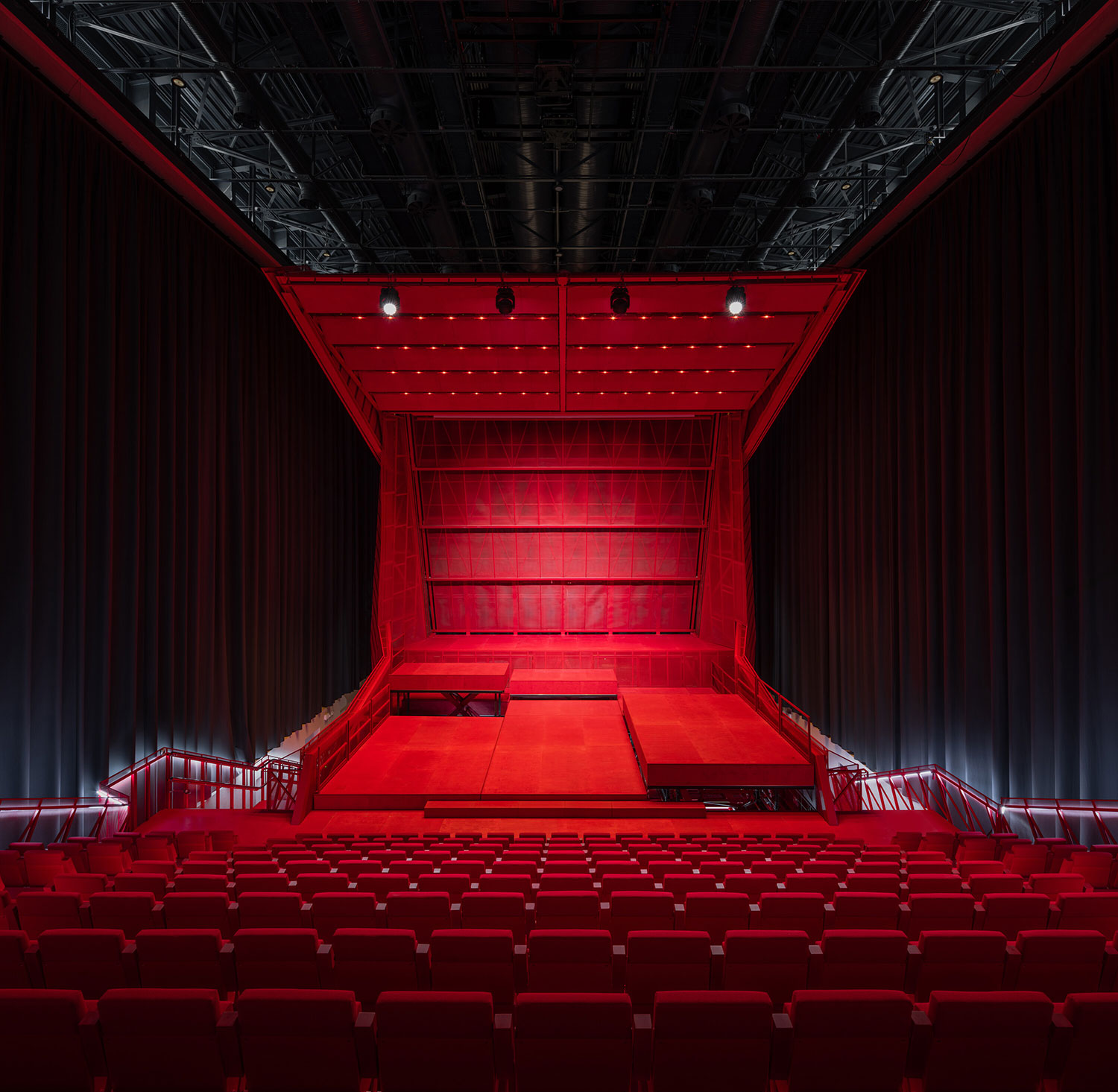
As the 20th century transitioned into the 21st, the building was utilized sporadically for cultural events and gradually fell into a state of disrepair. A significant purpose was sought to justify the expensive reconstruction efforts. This challenge persisted even during the preparatory phase for the renovation. Ultimately, the investor opted to repurpose the Imperial Spa into a cultural institution, with a concert and multifunctional hall positioned at its heart. This hall was situated within the atrium, which had once served as a functional machine room housing the peat conveyor.
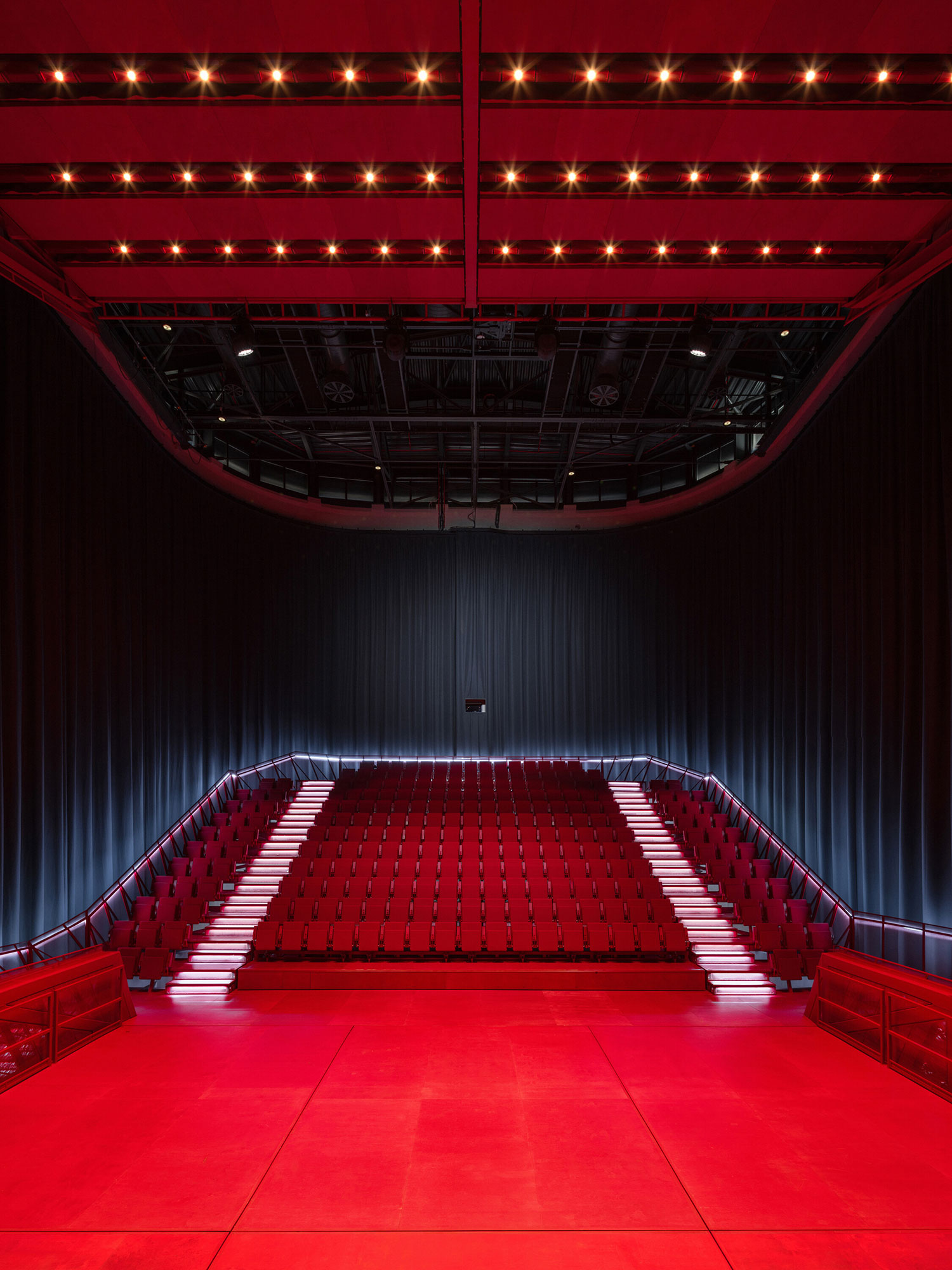
The historical “peat machine” served as a source of inspiration for the new design. With the restoration of spa operations not being part of the plan and only a few cast-iron columns from the original structure remaining, there was an opportunity to introduce a modern “machine” featuring cutting-edge scenic and acoustic technology. The hall’s design acts as a “transformer,” capable of adjusting its spatial and acoustic characteristics to meet the specific requirements of each event. This versatile space can be likened to a “Swiss army knife,” offering a multitude of functions.
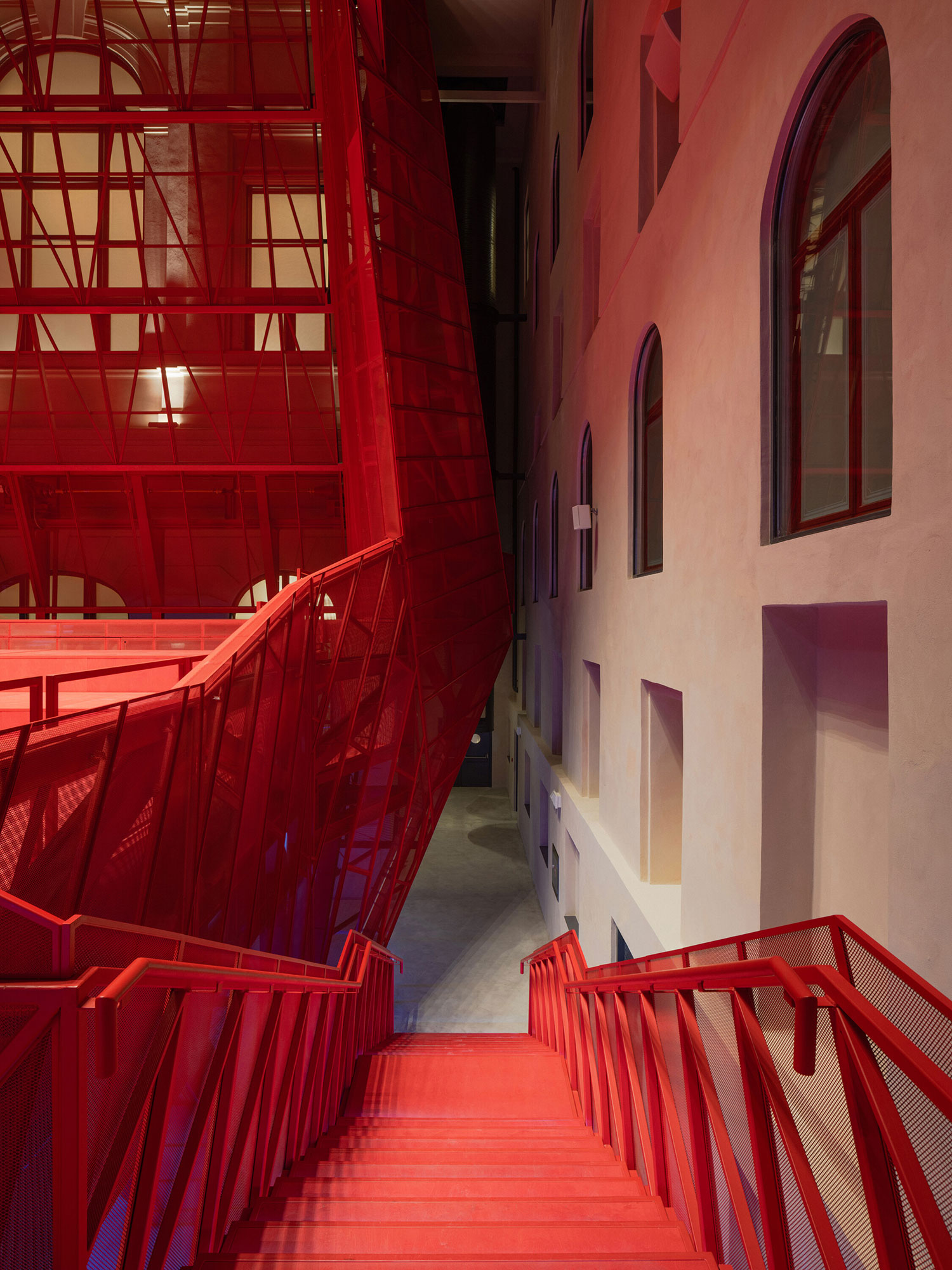
The hall boasts advanced features designed to optimize reverberation time and manipulate the direction and intensity of sound energy. An orchestral shell is equipped with a retractable screen that effectively channels sound towards the audience. Above the stage, rotating triangular panels serve multiple purposes, capable of reflecting, absorbing, scattering, or directing sound. Additionally, wooden panels mounted on a steel framework within the orchestra’s floor act as resonators, enhancing the harmony of the musicians’ instruments.
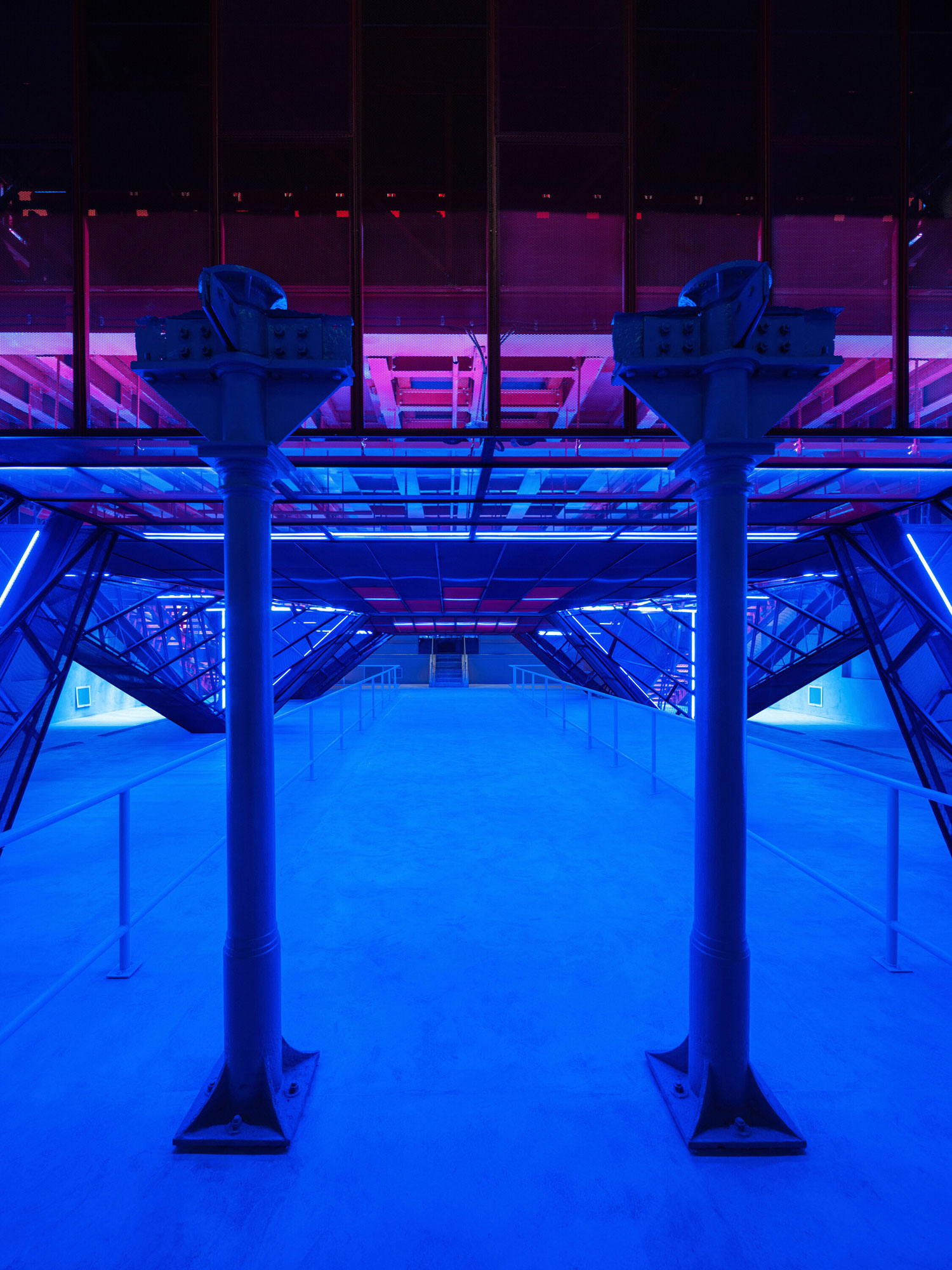
This versatile venue is outfitted with state-of-the-art technology to support a wide range of events, including concerts, theater performances, dance recitals, conferences, film screenings, and popular music shows. A heavy blackout curtain can transform the space into complete darkness, providing acoustic dampening as needed. The hall’s scenic and acoustic technologies are seamlessly integrated into its architecture, while essential systems for ventilation and fire safety are discreetly housed in a block above the main staircase roof.
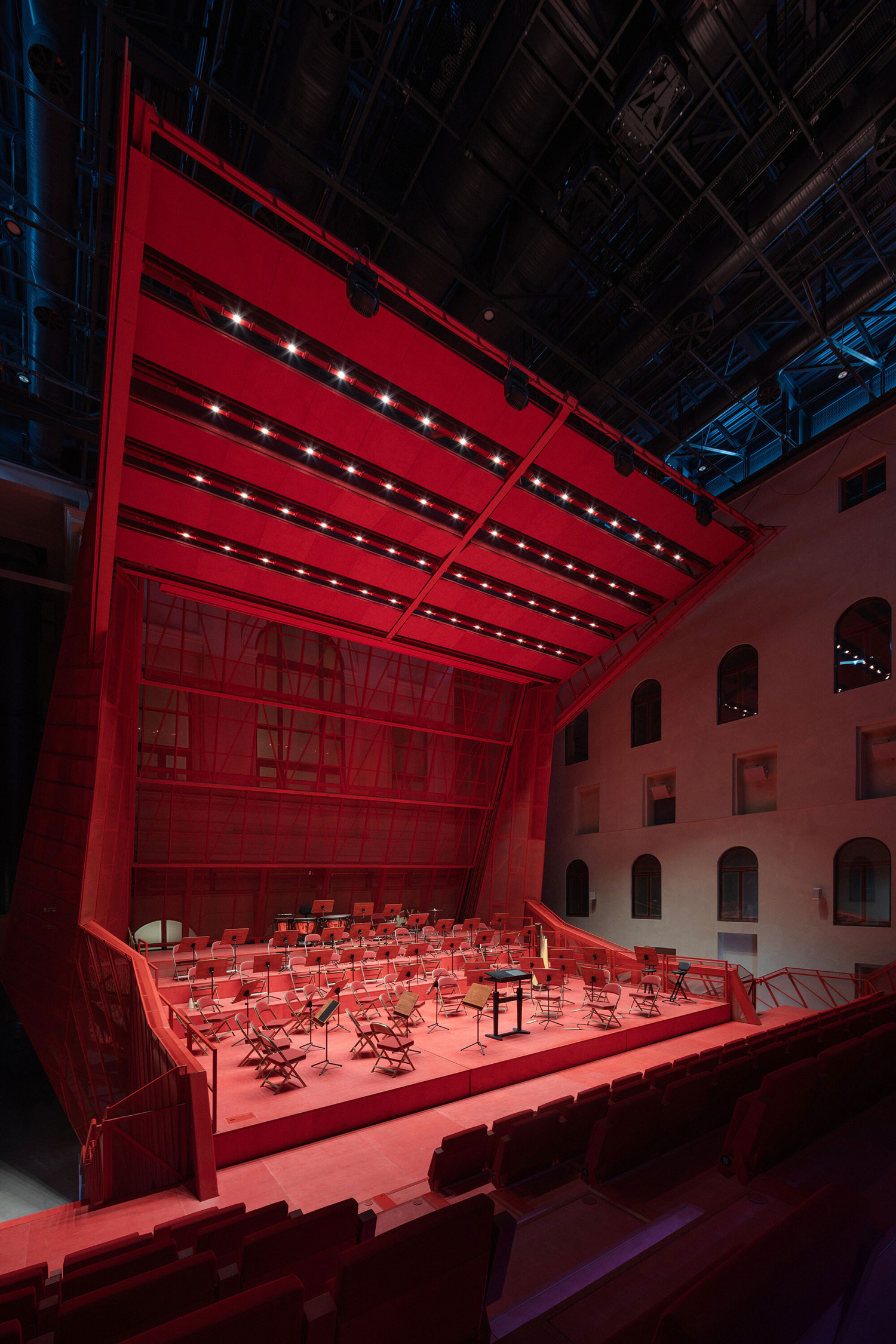
Constructing the hall presented significant challenges, particularly due to the size of the structural components, which could not be transported directly into the atrium. Instead, all elements had to be meticulously assembled from smaller parts that were brought in through an opening in the roof, showcasing the ingenuity and effort involved in creating this remarkable space.




